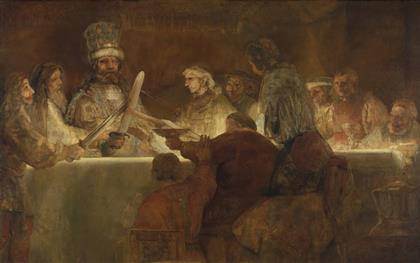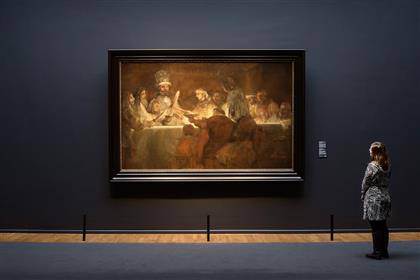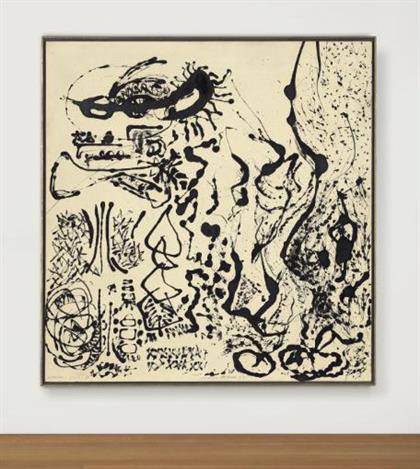
Rembrandt van Rijn
The Conspiracy of the Batavians Under Claudius Civilis, Claudius Civilis
1661-1662

Rembrandt’s “Conspiracy” at the Rijksmuseum “The Conspiracy of the Batavians under Claudius Civilis” (1661-62), originally Rembrandt’s largest and most prestigious painting, is on view at the Rijksmuseum in a very rare showing starting 21 March 2014.
March 25, 2014, source: Rijksmuseum Amsterdam
Owned by the Royal Swedish Academy of Fine Arts, the painting has been at the Nationalmuseum of Art in Stockholm for more than 150 years, leaving Sweden only twice in that time, in 1925 and 1969. Both of those occasions were for showings at the Rijksmuseum. The masterwork will be displayed in the Gallery of Honour starting 21 March 2014 in commemoration of the 400-year anniversary of bilateral relations between Sweden and the Netherlands.
Rembrandt painted this painting for short, in 1661-1662 under a commission from the burgomasters of Amsterdam. The enormous canvas, originally 550 cm high and 550 cm wide, was far and away the largest, most prestigious painting of his long career. The work was intended to be part of a series of eight equally large paintings depicting Batavian history to be hung in the new Amsterdam Town Hall (now the Royal Palace Amsterdam).
Originally one of Rembrandt’s former pupils, Govaert Flinck, was commissioned to paint the entire group, but when he died prematurely in 1660, all he had completed was an initial painted sketch. Rembrandt was then asked to depict the opening scene of the series: the moment when, at a meal in a sacred grove, the Batavian leader Claudius Civilis addresses other chieftains and brave warriors and calls on them to swear an oath against the Romans. Claudius Civilis is painted in a full frontal view, in opulent attire, with an elaborate headdress and… one blind eye. He is clearly the central figure of the narrative.
We know that in July 1662 the painting hung in the lunette in the south-east corner of the great hall of the Amsterdam Town Hall. A month later, a discussion took place between Rembrandt and his patrons, after which Rembrandt retrieved the painting to make changes to it. We do not know what specific changes the burgomasters desired, but Rembrandt’s painting was never returned. It was probably Rembrandt himself who cut the painting down to 196 cm by 309 cm, less than a year after its completion, leaving the central, most narrative fragment to survive to this day. Nearly 75 per cent of the original surface was destroyed. We only know what the original composition was from a drawing in Munich.
Follow us on:


